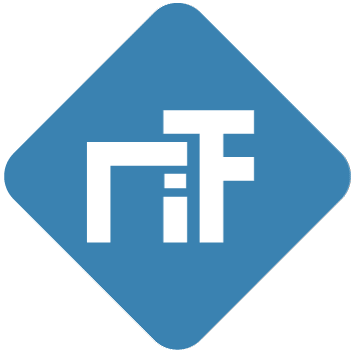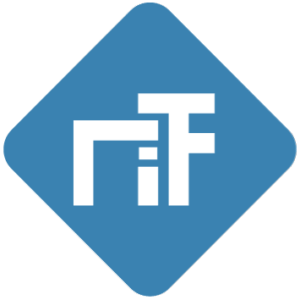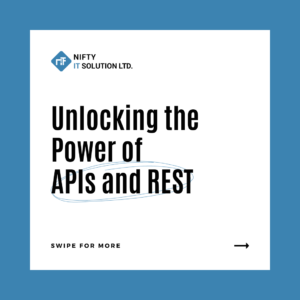Why Is Python Used for Machine Learning if It Is SlowThe statement that “Python is slow in case of use in machine learning” is quite opinion-based. We will break down the facts, show the comparison between programming languages for machine learning and finally suggest the best programming language for machine learning.
How Dominant Is Python for Machine Learning?
Every piece of digital technology is powered by rules, otherwise known as protocols. The internet, for instance, is powered by a wide range of protocols such as the Hypertext Transfer Protocol (HTTP), Secure Shell protocol (SSH), and the File Transfer Protocol (FTP). These rules determine how a website, software or network communicates and exchanges data.
This applies to blockchain networks as well. The underlying rules behind each protocol determine how transactions are recorded and executed on that blockchain. In this article, we’ll discuss what a blockchain protocol is, how it works, and the top 10 blockchain protocols you should be familiar with.
- Every piece of digital technology is powered by rules or protocols; this applies to blockchain as well.
- A blockchain protocol is a set of guidelines that govern how the nodes within each blockchain record and share data.
- Every blockchain network operates based on its own distinctive set of rules.
- Blockchain protocols are important because they determine the scope of functionality you’re likely to get out of any blockchain software you build.
As Machine Learning and Artificial Intelligence continue to gain prominence as significant fields in computer science, more and more programming languages are competing for attention in the machine learning space apart from traditional old languages like C++, Java and R, which stand out from the numerous programming languages. This article seeks to explore why Python is preferred and used extensively in machine learning despite its reputation for being slower than other programming languages like C++ and Java, which are faster.
Let’s find out if Python really is the best programming language for machine learning.
Every piece of digital technology is powered by rules, otherwise known as protocols. The internet, for instance, is powered by a wide range of protocols such as the Hypertext Transfer Protocol (HTTP), Secure Shell protocol (SSH), and the File Transfer Protocol (FTP). These rules determine how a website, software or network communicates and exchanges data.
This applies to blockchain networks as well. The underlying rules behind each protocol determine how transactions are recorded and executed on that blockchain. In this article, we’ll discuss what a blockchain protocol is, how it works, and the top 10 blockchain protocols you should be familiar with.
- Every piece of digital technology is powered by rules or protocols; this applies to blockchain as well.
- A blockchain protocol is a set of guidelines that govern how the nodes within each blockchain record and share data.
- Every blockchain network operates based on its own distinctive set of rules.
- Blockchain protocols are important because they determine the scope of functionality you’re likely to get out of any blockchain software you build.
What Is a Blockchain Protocol?
The Blockchain is an advanced database mechanism that records data on a decentralized network consisting of several connected computers or nodes. A blockchain protocol is a set of rules or guidelines that govern how the nodes within each blockchain record and share data with each other. This in turn determines how the entire blockchain network works.
Every blockchain network operates based on its own distinctive set of rules. These guidelines give direction to the various aspects of a blockchain’s operation including how transactions are verified, how data is recorded, and the development activities that take place on blockchain networks.
Protocols also determine how participants on blockchain systems such as miners, voters, stakers, and investors interact with the network and the rewards they get for such interactions (tokenization). Consequently, protocols directly influence a blockchain network’s performance and security.
How Blockchain Protocols Work?
Blockchain protocols are the essential operational components of each blockchain network. This is why individuals seeking to know how to create a blockchain must be well-informed about how protocols work and their significance.
While the rule book varies slightly from one blockchain network to the other, a protocol is essentially, the operating system for the blockchain technology. It determines how the participating computers on the network exchange information or interact with each other.
For every transaction initiated on a blockchain network, the algorithm behind the blockchain creates an immutable block and distributes it across the network. The participating nodes on the network will then determine the validity of the transactions based on the specific rules set in the network’s protocol.
Consider the Bitcoin blockchain, for instance, the protocol behind this blockchain network uses a peer-to-peer consensus mechanism to ensure decentralization. This means each transaction is verified by participating nodes without the need for a third party. All the participating nodes must agree on the validity of transactions before they’re stored on the distributed ledger.
Bitcoin uses a proof-of-work consensus mechanism to determine the validity of transactions. However, other blockchain networks with similar consensus systems may use proof of authority, proof of identity protocol, or proof of stake (PoS) protocol. The Ethereum network on the other hand is governed by smart contracts, a set of rules that automate transactions when they meet certain parameters as indicated in the contract.
Why Is Blockchain Protocol Important in 2024?
Blockchain protocols determine how everything works in a blockchain ecosystem. As such, it is a vital key to understanding both the present and future of blockchain technology. For anyone trying to launch a blockchain software development project in 2024, selecting the right protocol is one of the most crucial decisions you’ll have to make.
Blockchain protocols are important because they determine the scope of functionality you’re likely to get out of any blockchain software built on the protocol. Since blockchain networks operate without a central authority, the protocol will determine the rules for participating, managing transactions, and sharing data on the blockchain network.
The security of a blockchain network is dependent on the protocol that powers it. The cryptographic algorithms that form the basis of the protocol determine how unique digital signatures are created for each block of data. It also determines how the cryptographic hash functions and public-private key pairs work together to allow secure communication between nodes on the blockchain landscape.
Blockchain protocols play an important role in blockchain network tokenization. The protocol typically includes algorithms that determine how tokens (digital assets or currencies) are created and managed on the network. These tokens enable transactions and incentivize participation in the network.
Top 10 Blockchain Protocols
There are many blockchain protocols powering the operation of the different blockchain development platforms. Having good technical knowledge of these will help you determine the right ecosystem on which your blockchain product should be built. Here’s our list of the leading protocols and a short overview of how they work.
Bitcoin
The Bitcoin network is arguably the most popular and largest blockchain network in terms of market capitalization. The protocol behind the Bitcoin blockchain is a peer-to-peer consensus system. It uses a proof of work mechanism where network participants contribute computational power to the decentralized platform to validate transactions.
The Bitcoin Network allows decentralization, which means no central authority is needed to verify and confirm financial transactions. The protocol also creates the cryptocurrency through a process known as mining. While the Proof of Work consensus mechanism is efficient, it tends to be energy-intensive since individual nodes contribute to the network when they solve complex mathematical problems.
Ethereum
The Ethereum network is fast gaining popularity and is currently regarded as the second-largest blockchain network. Ethereum is designed to achieve decentralization through a smart contract mechanism. This is a self-executing contract, which means the terms of the contract or agreement directly written into the contract code, are enforced automatically by a set of algorithms once the conditions are met.
The consensus system of the Ethereum network is the proof of stake (POS) mechanism. With this system, participating nodes validate transactions by staking a specific amount of cryptocurrency instead of using computational power. The Ethereum network supports decentralized application development using Solidity, a Turing-complete programming language, which allows developers to write smart contracts into app codes, fostering innovation and developer adoption.
Cardano (ADA)
The Cardano Blockchain platform is primarily known as a sustainable decentralized applications development platform. The blockchain is supported by a proof of stake consensus protocol known as Ouroboros. This means participating nodes validate transactions by holding and staking a token.
The Ouroboros protocol was built to be secure, while also guaranteeing sustainability. It allows developers to build permissioned and permissionless networks, with significantly lower energy requirements compared to protocols that use a proof of work mechanism. The modular architecture of the Ouroboros protocol allows it to be easily upgraded over time.
Polkadot
Polkadot is a multi-chain blockchain known for its interoperability. The main feature of this blockchain network is that it facilitates the development of decentralized applications that can seamlessly communicate and transfer sensitive data to other cryptocurrency networks through securely connected chains. This is achieved through a heterogeneous multi-chain framework known as parachains that can be adapted to specific use cases.
The consensus mechanism used by the Polkadot network to maintain decentralization is known as the Nominated Proof-of-Stake (NPoS). This builds on the conventional proof of stake system, but the validators in this case are limited to nodes that have been nominated by other token holders. In addition to its interoperability, this consensus mechanism is also quite scalable and secure.
Hyperledger
Hyperledger is an open-source blockchain framework created by the Linux Foundation and targeted specifically at enterprise users. It is built on a smart contract engine which allows companies to develop decentralized applications and also offers secure channels through which they can share data privately.
Hyperledger is a permissioned blockchain, which means access to this network is only granted to authorized parties that must be known and authenticated. Interactions between members on the Hyperledger network take place within channels, designed to be completely private and secure.
The secure nature of the Hyperledger network makes it a particularly attractive platform for enterprises that prioritize data security such as banking, healthcare, and insurance organizations. It uses the BFT protocol to manage consensus. With this mechanism, all participating nodes must agree on the order of transactions before a new block can be added to the blockchain.
Tezos
Tezos is an open-source blockchain project that facilitates peer-to-peer crypto transactions and also allows developers to build and deploy smart contracts. The protocol behind this blockchain platform is built with a modular architecture with self-amendment capabilities. This allows the network to implement upgrades based on new technologies and user needs without disruptive hard forks.
Another unique attribute of the Tezos network is its governance model. With this model, consensus is achieved through a Liquid Proof-of-Stake (LPoS) mechanism. Tezos token holders also get to contribute to how the blockchain is governed, by voting on protocol upgrades and major network changes.
Hedera Hashgraph
Hedera is a decentralized ledger platform for storing and managing data or recording transactions. It uses an innovative blockchain technology known as Hashgraph to ensure quick and secure transactions. The Hedera platform has its own cryptocurrency and can be used to manage crypto payments. It also facilitates the development of decentralized apps with self-executing contracts.
Hadera is one of the most confidential blockchain protocols. Like the Hyperledger Fabric, Hadera Hashgraph achieves consensus based on the order of events. This is achieved through a highly secure mechanism known as asynchronous Byzantine fault tolerance (aBFT). The design of this network also favors interoperability with other systems of platforms.
Avalanche
Avalanche is a decentralized app development with smart contract functionality. Developers can also use this network to create highly scalable and interoperable custom blockchain networks.
To achieve consensus, Avalanche is built on a variant of the conventional Proof of Stake Mechanism known as metastability. This consensus protocol is designed to validate transactions quickly by using a network of validators connected to a small number of peers.
This system allows quick validation of transactions with no need for absolute finality. The speed with which transactions are approved on the Avalanche blockchain makes it quite scalable. This makes it particularly useful for large-scale enterprise development, especially for financial applications.
Quorum
Quorum is an enterprise-focused open-source protocol developed by J.P. Morgan Chase. It is a permissioned version of the Ethereum blockchain, which means participation in the entire network is restricted to only authorized parties. As an Ethereum fork, Quorum is a protocol designed to be interoperable with smart contracts and decentralized applications built with Ethereum. This facilitates cross-border transactions with these applications.
In terms of consensus mechanisms, Quorum’s protocol uses either the Raft mechanism or the Istanbul Byzantine Fault Tolerance. Both mechanisms are fast and secure, and their simplicity contributes to the speed of the Quorum network. Due to the speed of this network, it is commonly adopted by companies in the banking and financial services.
For governance, Quorum uses a democratic system known as QuorumChain, where all members of the blockchain have voting rights and can contribute to managing the Quorom ecosystem.
Cosmos
Cosmos is a blockchain ecosystem that consists of several independent blockchains. It is powered by a protocol heavily focused on the interoperability of blockchain platforms. This allows the seamless transfer of data and digital assets between the different blockchains in the ecosystem.
In addition to interoperability, the blockchains on this network also operate on a shared security model. These features make Cosmos the preferred network for creating decentralized exchanges and DeFi projects. On the Cosmos network, communication is achieved through the Inter-Blockchain communication network, while consensus is obtained through the Tendermint consensus algorithm.
Conclusion on Blockchain Technology Protocols
The protocol is the robust foundation of every blockchain ecosystem. The nature of this underlying algorithm determines how the network is secured and how transactions are managed by the participating nodes in the blockchain ecosystem. As this blockchain protocols list shows, there are several mechanisms that control how blockchain platforms work.
Consequently, an in-depth understanding of blockchain protocols is an important asset in blockchain-powered application development. To create successful and profitable decentralized applications and other products within the blockchain space, you should work with a blockchain development company with a solid knowledge of the various blockchain protocols.



